Boeing secures $2.8 billion contract to enhance U.S. Strategic SATCOM capabilities
Boeing [NYSE: BA] was recently awarded a $2.8 billion contract for the Evolved Strategic Satellite Communications (ESS) program, the space-based component of the U.S. nuclear command, control, and communications (NC3) architecture—the initial contract is for two satellites, with options for two more in the future.
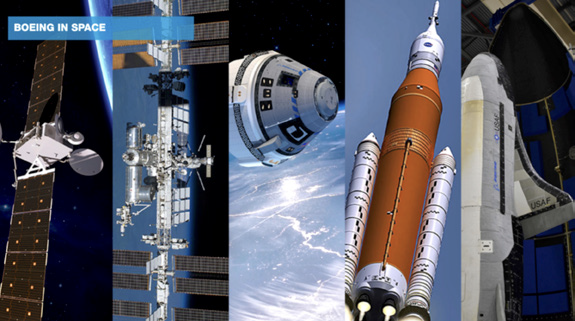 The ESS space vehicles will provide increased capacity, flexibility, reliability and resilience compared to the strategic communications satellites currently on orbit. Since 2020, Boeing has been executing technical maturation and risk reduction under a rapid prototyping contract for the U.S. Space Force.
The ESS space vehicles will provide increased capacity, flexibility, reliability and resilience compared to the strategic communications satellites currently on orbit. Since 2020, Boeing has been executing technical maturation and risk reduction under a rapid prototyping contract for the U.S. Space Force.
Boeing’s ESS solution is underpinned by technology the company has developed for the Wideband Global SATCOM (WGS)-11 and WGS-12 satellites and has already proven on-orbit aboard the commercial O3b mPOWER constellation.
Building on these developments, this strategic military communications satellite constellation will be equipped with flexible and resilient signals to protect against interruption or interception.
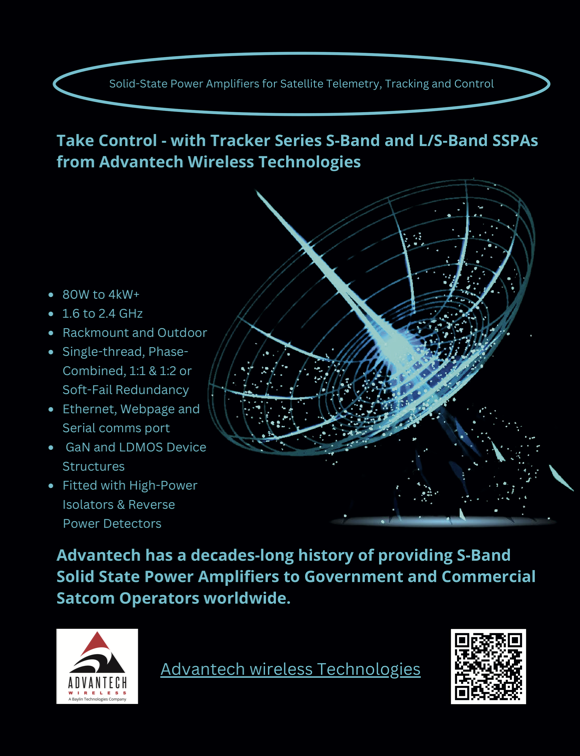 When deployed in geostationary orbit (GEO)—about 22,000 miles or 35,700 km from the Earth’s surface—ESS will provide persistent coverage to strategic warfighters worldwide. The spacecraft will leverage a highly protected waveform and classified technologies developed in partnership with the U.S. Department of Defense. Boeing is set to deliver the first of two space vehicles by 2031.
When deployed in geostationary orbit (GEO)—about 22,000 miles or 35,700 km from the Earth’s surface—ESS will provide persistent coverage to strategic warfighters worldwide. The spacecraft will leverage a highly protected waveform and classified technologies developed in partnership with the U.S. Department of Defense. Boeing is set to deliver the first of two space vehicles by 2031.
It’s a critical time to advance U.S. space capabilities to ensure peace through strength,” said Cordell DeLaPena, the U.S. Space Force Program Executive Officer for the Military Communications and Positioning, Navigation, and Timing Directorate. “The strategic communication mission requires protection, power and always-available capability, even through adversary attempts to interrupt our connectivity. These satellites will provide connectivity from space as part of a refreshed NC3 architecture for our nation.”
L3Harris has the future of PNT ready now
L3Harris recently demonstrated a cutting-edge Positioning, Navigation, and Timing (PNT) solution for the U.S. Space Force’s (USSF) Space Systems Command (SSC) that is adaptable to different platforms, is fully reprogrammable on-orbit, and is scalable to support additional signals and increased power to address evolving threats.
This ready-now solution can provide the USSF with the ultimate flexibility to efficiently field smaller, multi-launch capable satellites to augment or disaggregate the constellation.
During a two-day event, the company conducted a comprehensive Design Concept Review (DCR) showcasing a Resilient-GPS (R-GPS) prototype that performed beyond current requirements. The session demonstrated the ability to accelerate the existing USSF R-GPS roadmap for a more resilient PNT infrastructure.
Using their Navigation Technology Satellite-3 (NTS-3) reprogrammable payload and National Security Agency-certified reprogrammable cryptography, L3Harris successfully simulated the commanding of an R-GPS satellite to transmit navigation signals that were acquired and tracked by a monitor station receiver, as well as Military User Equipment and commercial receivers, signifying that R-GPS can seamlessly and efficiently be integrated into the existing GPS infrastructure.
L3Harris followed a “prototyping with purpose” approach, which is much more than a laboratory demonstration. The review showcased maturity far beyond a traditional Preliminary Design Review, translating into a low-risk, achievable plan for future development phases of the R-GPS program. The L3Harris R-GPS design includes capabilities aligned to future Lite Evolving Augmented Proliferation, providing an opportunity for roadmap acceleration and reduction in lifecycle costs.
The DCR conveyed how the L3Harris R-GPS satellite will minimize impact on the Control Segment and maintain backward compatibility with current and in development user equipment to ensure operational compatibility.
USSF releases ‘Principles for Space Access Resourcing Decisions
The U.S. Space Force (USSF) has released the organization’s Principles for Space Access Resourcing Decisions Annex to the Commercial Space Strategy.
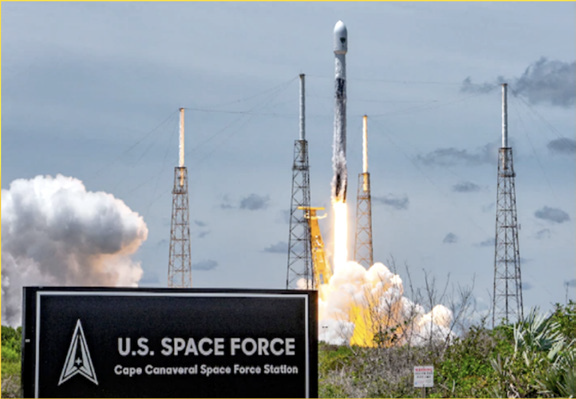
The annex details how the service will consider and prioritize commercial space sector requests for government resources, as well as government investment decisions.The annex features nine principles, rooted in law, that will guide the Assured Access to Space Enterprise’s decision-making on a variety of resourcing decisions including acquisition strategies, investment priorities and property allocation.
The annex signals an acknowledgment of the evolution of the space access landscape from the 1950s, in which the government was the primary customer, to today where commercial space activities account for the preponderance of launch manifest activities.
“Our access to space is foundational to our national security and our way of life,” said Deputy Chief of Space Operations for Strategy, Plans, Programs and Requirements, Lt. Gen. Shawn N. Bratton. “These principles reflect our understanding that a strong commercial space industry is a force multiplier for the U.S. Space Force. We are committed to working alongside our industry and allied partners to ensure safe, reliable and resilient access to space for decades to come.”
“For decades, our partnership with the commercial space sector has been instrumental in securing America’s access to space,” said Lt. Gen. Philip A. Garrant, commander of Space Systems Command. “We are committed to making strategic decisions that ensure our national security needs are met, while also fostering a robust and competitive commercial space industry. The strength and innovation of the commercial sector is ultimately a force multiplier for our national security.”
Honeywell Aerospace awarded U.S. Government contracts to develop quantum sensor-based navigation systems
Honeywell Aerospace (NASDAQ: HON) has been selected by the U.S. Department of Defense’s (DoD) Defense Innovation Unit (DIU) to participate in the Transition of Quantum Sensing (TQS) program.
 The program aims to accelerate adoption of quantum sensors to address near-term alternative position, navigation and timing (PNT) and intelligence, surveillance and reconnaissance (ISR) applications for the U.S. Joint Forces Command.
The program aims to accelerate adoption of quantum sensors to address near-term alternative position, navigation and timing (PNT) and intelligence, surveillance and reconnaissance (ISR) applications for the U.S. Joint Forces Command.
Honeywell has been selected to support the TQS program under two DoD contracts: CRUISE (Compact Rubidium Unit for Inertial Sensing and Estimation) and QUEST (Quantum Enabled Sensor Technologies for MagNav).
The CRUISE program, established by the DoD in partnership with Vector Atomic, will focus on developing quantum sensor-based Inertial Measurement Units (IMUs) to provide a standalone navigation solution without relying on traditional Global Navigation Satellite Systems (GNSS) susceptible to jamming and spoofing. Honeywell will support the development of this quantum-sensor-based technology, which will enable the measurement of acceleration and orientation from an IMU mounted to a vehicle to calculate changes in position and velocity. As a result, it will meet next-generation performance requirements at a lower size, weight and power than existing products.
The QUEST program aims to advance the performance of magnetic anomaly aided navigation (MagNav), which is a GNSS-independent navigation technique that uses quantum magnetometers to leverage measurements of the magnetic field of the Earth as a navigation signal.
Through the program, the DoD aims to improve these quantum magnetometers and demonstrate their utility in GNSS-denied flight. Building on its deep expertise in innovative navigation solutions, Honeywell’s main contribution will be to generate novel algorithms that use these sensors and improve navigation accuracy.
With the growing threat of jamming and spoofing, aircraft and naval vessels on critical missions can no longer rely solely on GPS,” said Matt Picchetti, vice president and general manager, Navigation and Sensors, Honeywell Aerospace Technologies. “Quantum sensors have the potential to augment existing navigation solutions, helping pilots operate with greater confidence. Honeywell’s pedigree in fielded sensors and navigation solutions provide us with a unique perspective to ensure the technology is viable beyond the laboratory. As quantum sensor-based navigation technology matures, we believe it has the potential to displace existing technologies as well as be a serious disruptor to the inertial and magnetic sensor industries. Most importantly, it could improve navigation in high-stakes environments—enhancing safety, efficiency and overall mission success for the DoD.”
Astroscale U.S. signs Space Act Agreement with NASA to advance national security on-orbit servicing capabilities
Astroscale U.S. has signed a reimbursable Space Act Agreement with NASA’s Goddard Space Flight Center (GSFC) to test rendezvous, proximity operations, and docking (RPOD) capabilities of the Astroscale U.S. Refueler spacecraft.
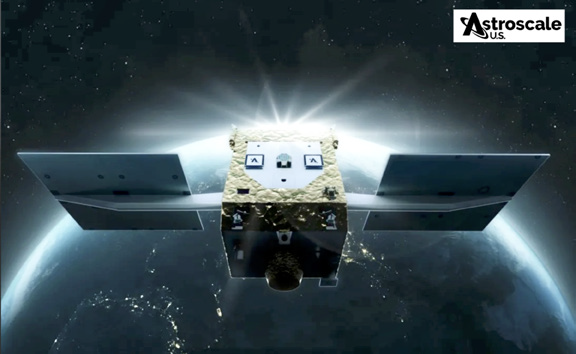 Astroscale U.S. will test its Refueler at GSFC in preparation for Astroscale U.S.’s two refueling operations of U.S. DoD satellites in Geostationary Orbit (GEO) for the United States Space Force (USSF).
Astroscale U.S. will test its Refueler at GSFC in preparation for Astroscale U.S.’s two refueling operations of U.S. DoD satellites in Geostationary Orbit (GEO) for the United States Space Force (USSF).
GSFC is a premier test site, known for supporting landmark missions such as the Hubble Space Telescope servicing efforts as well as other NASA in-space servicing, assembly, and manufacturing (ISAM) projects.
The Space Act Agreement enables Astroscale U.S. to validate the Refueler spacecraft’s complex RPO and docking maneuvers with high fidelity.
The partnership illustrates the opportunities unlocked by the center’s renowned ISAM robotic testing facilities. Testing of the Refueler spacecraft at GSFC is expected to conclude in August 2025.
“Conducting orbital maneuvers to match the orbit and attitude of a client spacecraft, closely approach, and then dock to it — commonly known as RPOD — is a series of incredibly complex activities,” said Dr. Clare Martin, Executive Vice President of Astroscale U.S. “We’re thrilled to enter into this Space Act Agreement with NASA’s Goddard Space Flight Center, which provides one of the most flight-like testing environments available. This opportunity allows our team to test like we fly, leverage GSFC’s deep expertise in on-orbit servicing and assembly, and build on Astroscale’s global, flight-proven leadership in RPO.”
“Part of our mission is to enable industry to develop new in-space capabilities and help ensure the continued advancement of on-orbit servicing,” said Jill McGuire, Associate Director for NASA’s Exploration and In-Space Services (NExIS) Projects Division at GSFC.
DeepSat selects Redwire’s AI-powered digital engineering systems for precursor mission in VLEO
Redwire Corporation (NYSE: RDW) has been awarded the first phase of a multi-phase contract by DeepSat, an Earth Observation (EO) startup, to provide advanced modeling, simulation and design services for a planned, dual-use, Very Low Earth Orbit (VLEO) satellite constellation.
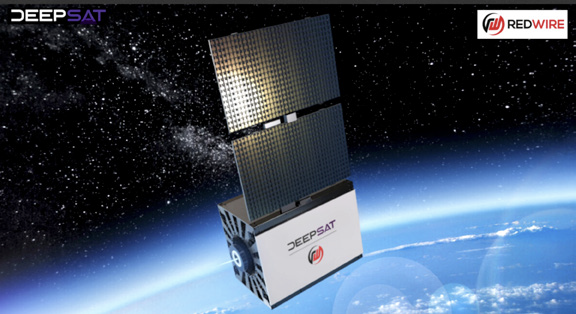
The contract represents DeepSat’s first step toward deploying a VLEO constellation designed to serve customer missions with high revisit and on-orbit AI for advanced sensor fusion.
Under this initial contract phase, Redwire will leverage its Acorn 2.0 Agent-Based Modeling and Simulation (ABMS) software to support the architectural design and performance optimization of the DeepSat constellation. Acorn 2.0’s high-fidelity, agent-based approach will allow DeepSat to rapidly evaluate system behavior, mission utility, and operational scenarios across a wide range of conditions, enabling an accelerated development to launch timeline.
DeepSat’s advanced VLEO satellite constellation will combine high revisit rates with on-orbit AI and multi-domain intelligence, surveillance and reconnaissance (ISR) capabilities. The platform enables resilient, real-time, AI-powered Earth intelligence for critical missions such as vessel detection, energy infrastructure monitoring and disaster assessment across civil, commercial, and defense.
SEOPS integrates EPIC Athena on the TRACERS mission with SpaceX
SEOPS Space is providing the capacity, mission management and integration services for EPIC Athena, a 110 kg pathfinder spacecraft funded by NASA, the National Oceanic and Atmospheric Administration (NOAA), and the Department of Defense’s U.S. Space Force (USSF)’s Space Systems Command (SSC).
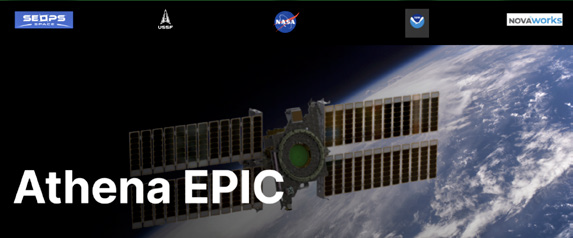 EPIC Athena represents the fifth of six spacecraft to launch under the Rideshare 2024-Blaze contract between SEOPS and the USSF’s SSC.
EPIC Athena represents the fifth of six spacecraft to launch under the Rideshare 2024-Blaze contract between SEOPS and the USSF’s SSC.
As a secondary ride share payload on NASA and the University of Iowa’s upcoming TRACERS mission, EPIC Athena is a Department of Defense (DoD) Space Test Program mission containing a DoD experiment.
SEOPS has provided integration and mission services for more than 400 satellite deployments, including for the U.S. Space Force, NRO and NASA, as well as commercial organizations around
the world. The spacecraft is slated to launch on a SpaceX Falcon 9 later this month from Space Launch Complex 4E (SLC-4E) at Vandenberg Space Force Base in California.
The mission is a technology pathfinder of NovaWurks’ Hyper-Integrated Satlet (HISat) disaggregated satellite platform for making critical Earth science sensing measurements. Equally important is the goal to prove out technical partnerships and processes between multiple federal agencies to create a simple, rapid and highly integrated bus-payload system as a more affordable way to launch missions on a reduced schedule. NovaWurks designs, manufactures and operates satellites based on the HISats architecture, or SLEGO™, at its production and engineering facilities in Southern California.
It’s always a privilege to work with the federal government on missions, and this one was particularly rewarding because of its goal to advance rapid response capabilities,” said Chad Brinkley, chief executive officer of SEOPS. “It’s in our wheelhouse and aligned with our goals of providing space access without compromise to organizations around the world.”
Dr. Roberta Ewart, chief technology officer for the SSC, said, “NASA, the Space Force and NOAA have strategically aligned efforts to gain wisdom from the EPIC Athena Sensorcraft, from demonstrating key capabilities to spearheading efficiencies and new ways of collaborating across the federal government, all while creating a transformational advantage for our country.”

